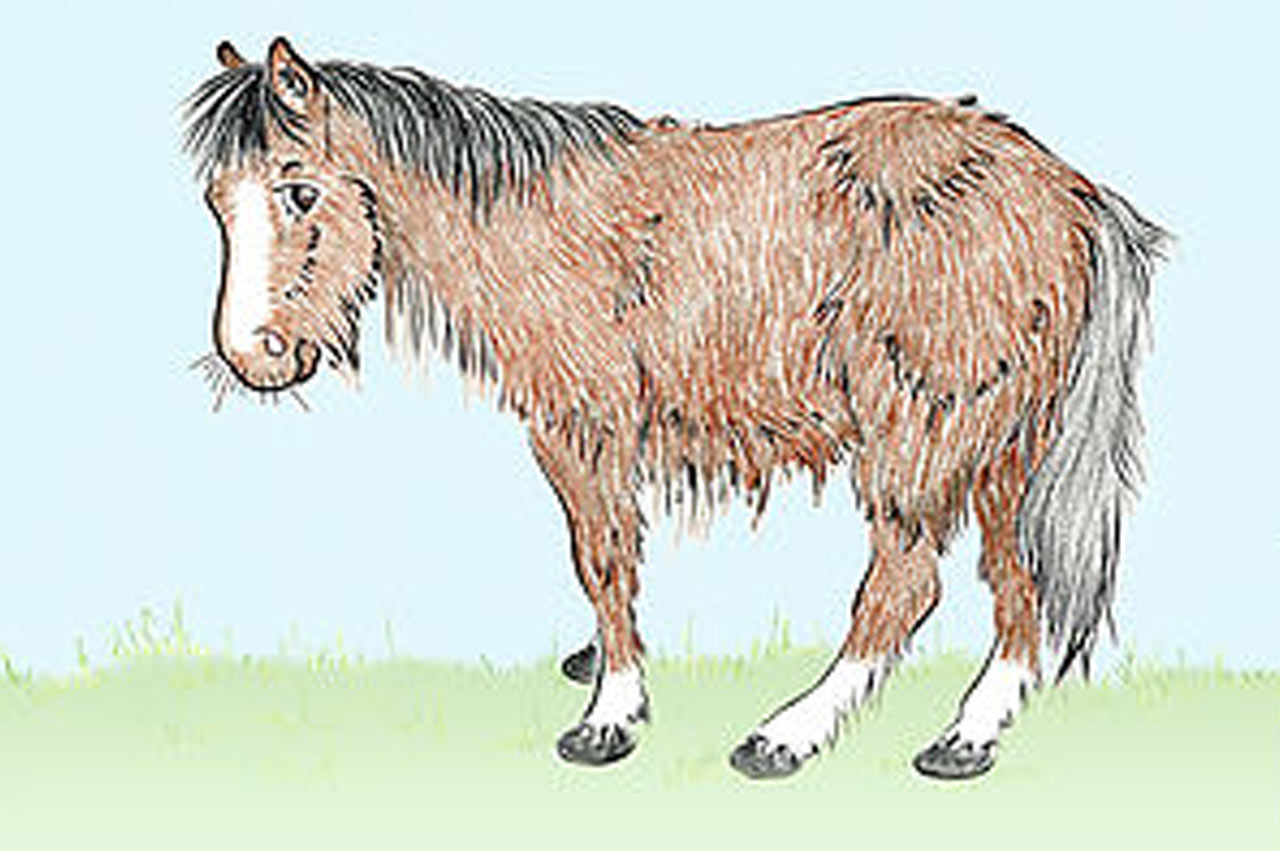Equine Cushing’s Disease is caused by a benign tumor of the pituitary gland in the brain that secretes adrenocorticotropic hormone (ACTH) which stimulates the adrenal glands to produce excessive amounts of cortisol. The region of the gland affected is called the pars intermedia, thus the medical term for equine Cushing’s is Pituitary Pars Intermedia Dysfunction (PPID).
- failure to shed out, producing fuzzy Cushing horse look.
- Many horses have excess sweating in response to their long coat.
- muscle atrophy, loss of topline, weight loss, or a pot bellied appearance.
- Lethargy
- Depressed immune system predisposing them to infections
- Delayed would healing.
- laminitis, due to altered perfusion of the foot and altered metabolism
Testing for Cushing’s disease
We are offering a new option for testing for Equine Cushing’s disease. The basic test for Cushing’s disease is measuring the baseline level of ACTH in your horse’s blood. However, there are some horses who have baseline ACTH results within the normal reference range that are experiencing many of the symptoms of Cushing’s Disease; such as: long hair coat, loss of topline muscling, delayed wound healing, recurrent laminitis. The TRH response test can be used to test for equine Cushing’s disease with greater sensitivity than the baseline ACTH test alone.
A sample of blood can be drawn to measure your horse’s baseline ACTH level. There is a seasonal rise in ACTH in the fall and there are seasonally adjusted reference intervals. For many the baseline ACTH level is sufficient to diagnose Cushing’s.
If your horse’s baseline ACTH results are at the upper end of normal and they are experiencing many of the symptoms described above, we would recommend performing a TRH response test. A baseline blood sample is drawn, then the horse is injected with TRH, and a second blood sample is drawn. The baseline ACTH level is compared to the post TRH blood sample ACTH level, an increase in ACTH indicates there are tumor cells responding abnormally to TRH and supports the diagnosis of Cushing’s disease. Horses that are positive on the TRH stim test and negative on ACTH baseline are thought to be earlier on in the disease process, but would still benefit from pergolide. There are no risks associated with the test and no change in activity required afterward. There are no seasonally adjusted intervals for the TRH stimulation test, so it cannot be performed from August to October. Please call us if you have questions or concerns about your horse.


